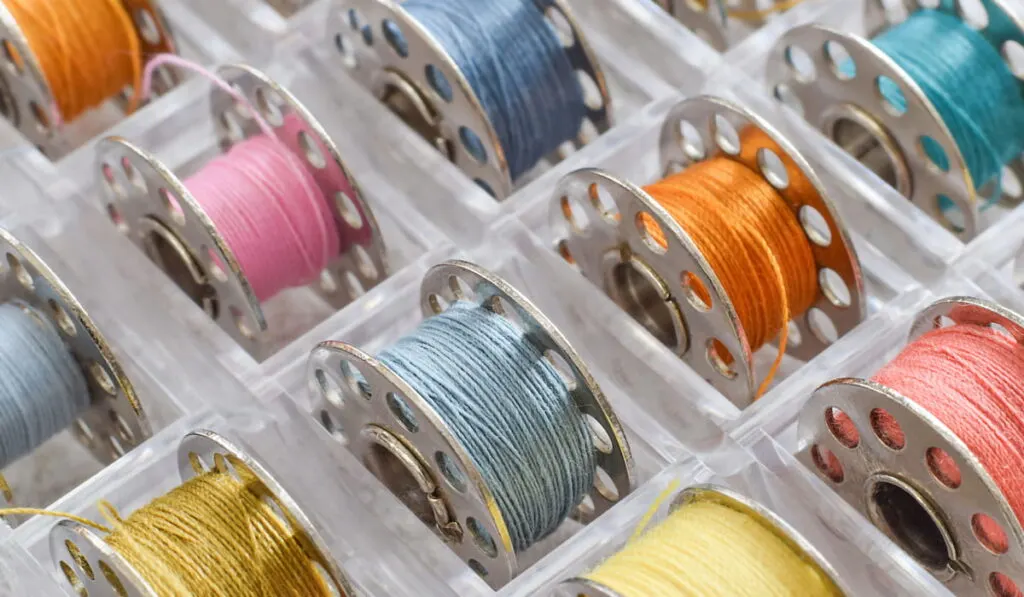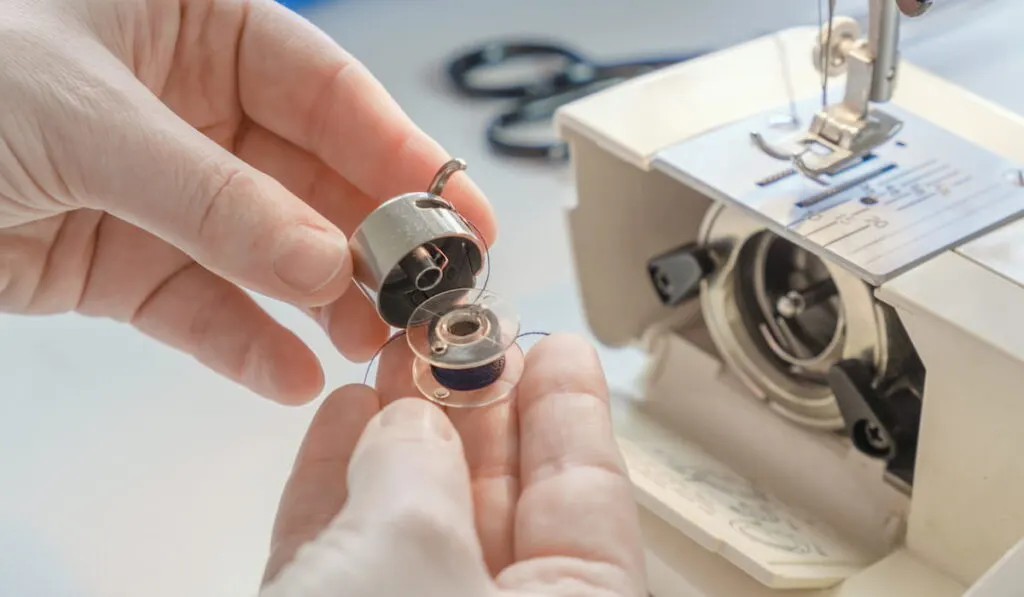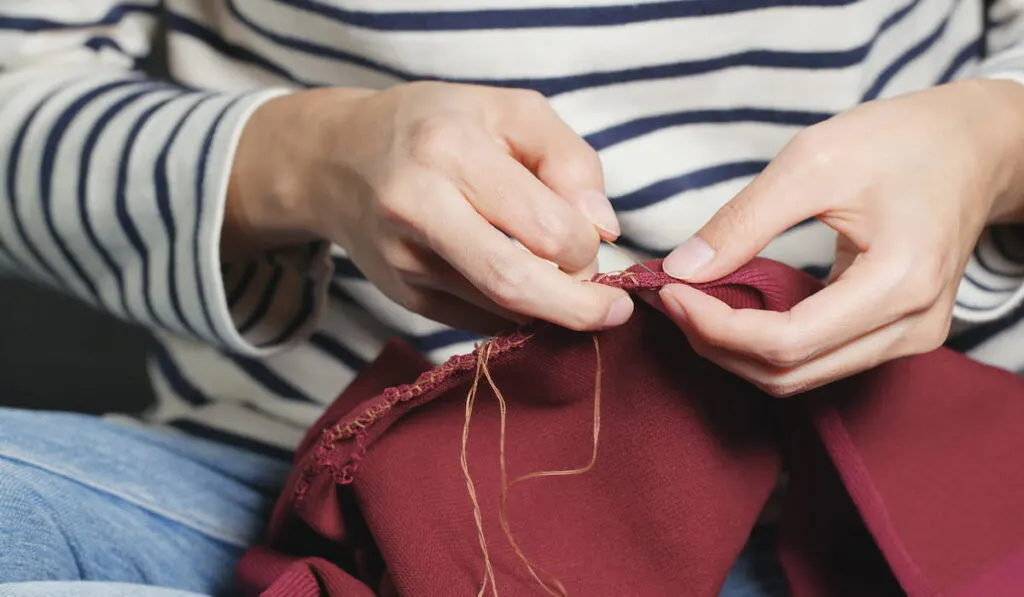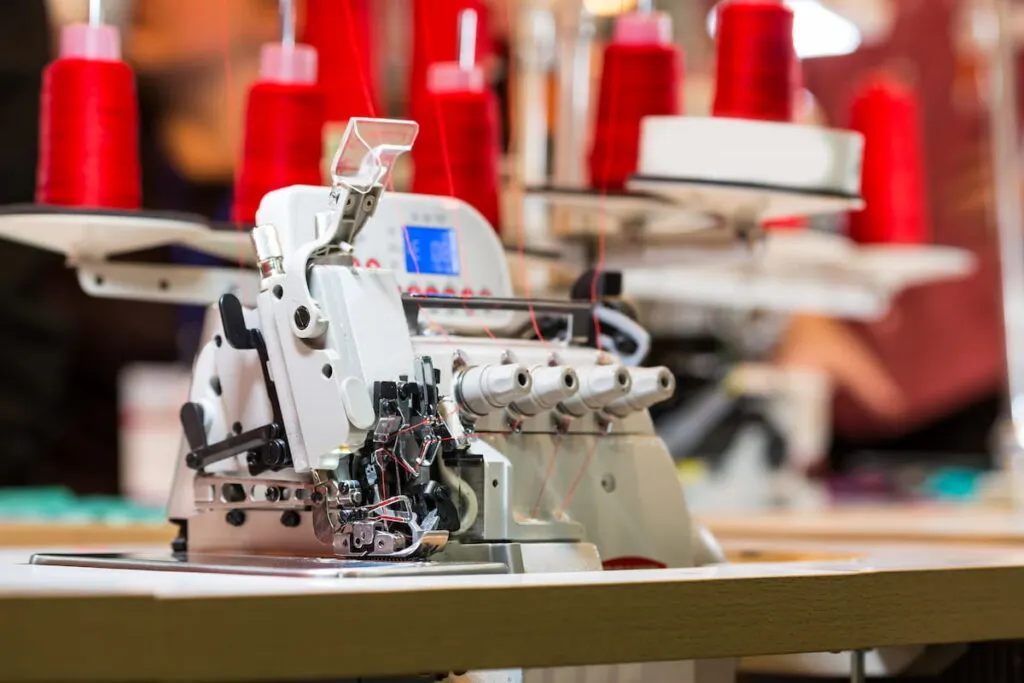Many people wonder if it’s possible to sew without a bobbin. Well, a bobbin is an important accessory in the sewing machine, and without it, you won’t be able to continue sewing on your machine; however, the good news is that there are alternatives that you can use to sew your favorite clothes.
Keep reading to know more about bobbin and its functions and the other options you can use.
What Is the Function of the Bobbin?
A bobbin is a tiny metal, wood, or plastic reel used in sewing machines to hold the thread. You cannot form a stitch in a sewing machine with the needle thread alone, you will require a bobbin thread to loop it with.

To secure the fabric you are sewing, you must create a lockstitch which is created by the needle thread and bobbin thread together.
In the needle, the upper thread can be seen instantly, and the lower thread is hidden under the feed dog which means you will not often see it while stitching. However, to get a great finished product it is essential to secure the bobbin thread properly.
The purpose of the bobbin is to hold the thread, which is then fed into the machine to secure a stitch. You cannot use a common sewing machine without one.
Where the Bobbin Goes
The bobbin is placed under the needle in a compartment in a sewing machine and can be bought separately as well. You can wind the thread on it by hand easily but many sewing machines have a built-in bobbin winder.
The Bobbin Case

The bobbin is covered in a case called a bobbin case which holds the thread while providing tension to the lower thread. As the needle thread is pulled around the case of the bobbin, it gets wrapped around the thread of the bobbin and gets pulled through the plate.
A bobbin case is also important to maintain the tension of the thread which ensures the balanced and smooth stitching of the fabric. Without a bobbin, it is difficult to thread practical stitches so that makes a case of bobbin an essential part of every sewing machine.
Now that you know what is a bobbin used for, you must have understood how important it is to keep the stitch intact. However, if you don’t have a bobbin, don’t worry! Let’s have a look at some of the other ways that you can try.
What Should You Do If You Don’t Have a Bobbin
There is always a solution to every problem. No bobbin? No worries! Try these alternatives.
Hand Sew
Hand sewing is of the oldest and traditional method of stitching. Even with a sewing machine, a little touch of hand sewing makes the finished product a whole lot better! While it requires a lot of time and patience, hand sewing is an art that you should master.

Usually, hand sewing is used for these common reasons:
- You can use the hand sewing method to stitch buttons and snaps, mend the torn leggings, lace or seams, and to fix the holes in gloves or socks.
- Sometimes, delicate fabrics such as chiffon or lace can get torn under a sewing machine’s foot so it is best to sew them with hands.
- The most common types of hand stitches are
- Running stitch
- Blind stitch
- The hem stitch
- Hand sewing is also very useful when adding embellishments to your clothes such as sequin, beads, applique, or motifs.
- Moreover, the hand sewing method comes quite handy while traveling because you cannot carry your sewing machine with you everywhere.
Use Fabric Glue
While sewing with a machine gives more precise and smooth results, fabric glue is a great alternative depending upon what you are using it for. It is mostly used when you don’t want the stitches to show.
These glues are quite strong and hold the fabric together permanently. The best part about a fabric glue is that it is nontoxic, washable, and dries quickly.
Mostly a fabric glue is used to create no-sew pillow covers, no-sew scarves, and headbands.
Furthermore, fabric glue is a quick solution to fix torn hems, trims, and to fix the broken zippers. It can also be used to add embellishments to your clothes.
Use Machines Without a Bobbin
Even though the lockstitch created by the machines with a bobbin is secure, there are machines available that are bobbin free. These machines are called sergers, overlockers, and chain stitch machines.

These machines use the top thread to create a chain stitch that holds the fabric together. The thread underneath the cloth feeds off a moving looper which is basically a hinged hook with thread guides.
They are ideal for those who are learning how to stitch but not for professionals because the stitch made by these machines is not secure and intact.
Things to Remember When Using a Bobbin
Even with all these alternatives, the stitch that a sewing machine with a bobbin makes cannot be replaced so ultimately, machines with a bobbin should be your first choice! But when using bobbins, you must keep in mind some things to enhance your experience.
1. Use the Right Size Bobbin
It is important to get a right-sized bobbin for your machine to get a smooth stitch. If you are not certain which bobbin works for your machine, refer to the machine’s manual.
2. Make Sure the Bobbin is Properly Wound
Make sure the bobbin is properly wound before you start stitching. If you fail to do that, it will show in your finished project and the results might not be what you expected.
3. Check Your Thread Tension
Before starting sewing, be sure to check that bobbin’s thread tension is not too high. That can be done by holding the wound bobbin by the end string and shaking it to see if it unravels or not.

4. Keep Spare Bobbins on Hand
Most machines come with 3 to 5 bobbins. You might think that’s enough however it’s a good idea to keep some extra bobbins at home so you can enjoy your sewing without any interruption.
5. Do Not Wind Your Bobbin Too Tightly
Do not wind your bobbins too tightly this can cause the bobbin to bulge or stretch. Give them some room to breathe.
6. Clean Your Bobbin Case
Lastly, do not forget to clean the bobbin. It may seem like a small accessory but regular cleaning and maintaining before and after use is important to avoid production failures. So keep these things in mind and enjoy your sewing!
